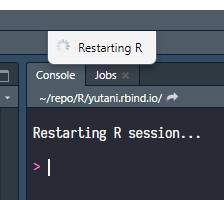
The operators and = assign into the environment in which they are evaluated. RStudio provides the Ctrl-1 and Ctrl-2 shortcuts allow you to jump between the script and the console windows. If R is ready to accept commands, the R console shows a prompt. If it receives a command (by typing, copy-pasting or sent from the script editor using Ctrl-Enter ), R will try to execute it, and when ready, show the results and come.
- Base R has an editor window where one can write and edit code. Base R has a console where one can see the output of that code. Rather than using base R to write or edit code and to view the code output, it’s easier to use R Studio. It has 4 panes which allow you write or edit code, view the code output, view variables and viewing graphs.
- Hi, I'm new to programming and I'm confused on the difference between the two. I have googled this and I am still confused on the difference after reading the responses. Part of the reason I am confused is I am thinking in terms of running script in Batch files. For instance, lets say I have a script in R and I create a batch file that runs the script where I use R.exe. When I put this in the.
- Difference Between Mac And Windows Os; Why Make Backups with Disk Drill and Not with R‑Studio Apple And Windows Differences. Making backups with Disk Drill is straightforward. This app enables the user to create image files of hard disks, partitions, and external devices in standard market formats. This is an advantage over other applications.
| Category | Description | Open Source Edition | Professional Edition |
|---|---|---|---|
| Overview | Access the RStudio IDE from anywhere via a web browser | ||
| Move computation close to the data | |||
| Scale compute and RAM centrally | |||
| Powerful coding tools to enhance your productivity | |||
| Easily publish apps and reports | |||
| Python Development | View Python data, publish and knit in Python and share objects with R | ||
| Author and edit Python code with Jupyter Notebooks, JupyterLab and VSCode | |||
| Easily publish and share Jupyter Notebooks | |||
| Project Sharing | Share projects & edit code files simultaneously with others | ||
| Multiple R Versions | Run multiple versions of R side-by-side | ||
| Define environments for a particular R version | |||
| Multiple R and Python Sessions | Run multiple analyses in parallel | ||
| Load Balancing | Load balance R sessions across two or more servers | ||
| Ensure high availability using multiple masters | |||
| Administrative Dashboard | Monitor active sessions and their CPU and memory utilization | ||
| Suspend, forcibly terminate, or assume control of any active session | |||
| Review historical usage and server logs | |||
| Enhanced Security | LDAP, Active Directory, Google Accounts and system accounts | ||
| Full support for Pluggable Authentication Modules, Kerberos via PAM, and custom authentication via proxied HTTP header | |||
| Encrypt traffic using SSL and restrict client IP addresses | |||
| Auditing and Monitoring | Monitor server resources (CPU, memory, etc.) on both a per-user and system-wide basis | ||
| Send metrics to external systems with the Graphite/Carbon plaintext protocol | |||
| Health check with configurable output (custom XML, JSON) | |||
| Audit all R console activity by writing input and output to a central location | |||
| Advanced R Session Management | Tailor the version of R, reserve CPU, prioritize scheduling and limit resources by User and Group | ||
| Provision accounts and mount home directories dynamically via the PAM Session API | |||
| Automatically execute per-user profile scripts for database and cluster connectivity | |||
| Data Connectivity | RStudio Professional Drivers are ODBC data connectors that help you connect to some of the most popular databases | ||
| Launcher | Start processes within various systems such as container orchestration platforms | ||
| Submit standalone ad hoc jobs to your compute cluster(s) to run computationally expensive R or Python scripts | |||
| Tutorial API | Automate interactions with the RStudio IDE | ||
| Remote Sessions | Connect to RStudio Workbench directly from RStudio Desktop Pro for more powerful computing resources, freeing up your local system |



2.3 R and RStudio: What is the difference?
First time users of R are often confused as to the difference between R and RStudio. RStudio is actually an add-on to R: it takes the R software and adds to it a very user-friendly graphical interface. Thus, when one uses RStudio, they are still using the full version of R while also getting the benefit of greater functionality and usability due to an improved user interface. As a result, when using R, one should always use RStudio; working with R itself is very cumbersome. In these tutorials, textbf{from Chapter 3 onwards} R will be used to reference R and RStudio with the assumption that the reader is operating in RStudio.
Differences Between R Studio For Windows And Windows 10

Cached
Since RStudio is an add-on to R, you must first download and install R as well as RStudio, two steps which are done separately. On your computer, you will see R and RStudio as separate installed programs. When using R for data analysis, you will always open and work in RStudio; you must leave R isntalled on the computer for RStudio to work, even though you will likely never open R itself.